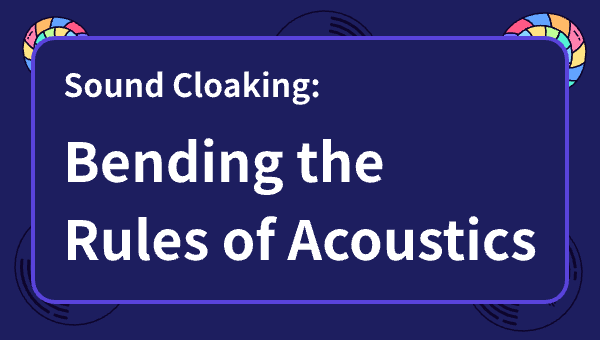Sound Cloaking: Bending the Rules of Acoustics

Sound cloaking is an innovative technology in the field of acoustics and material science that enables objects to become “invisible” to sound waves. Unlike optical cloaking which manipulates light, sound cloaking manipulates acoustic waves, bending, absorbing, or redirecting them to create regions of silence or “quiet zones.”
What Is Sound Cloaking?
Sound cloaking refers to the use of engineered materials or structures—often called acoustic metamaterials—that can control the propagation of sound waves in ways that traditional materials cannot. By redirecting sound waves around an object, the object becomes acoustically undetectable or “invisible.”
How Does Sound Cloaking Work?
The key principle involves manipulating the speed and direction of sound waves using metamaterials with specially designed internal structures. These structures can:
Alter the effective density and bulk modulus of the medium
Guide sound waves smoothly around an object without scattering
Create zones where sound intensity is drastically reduced
These effects rely on precise material design at micro or nanoscale, creating unique pathways for sound that conventional materials cannot achieve.
Applications of Sound Cloaking
Noise reduction in architectural acoustics, such as making rooms or machinery “quiet”
Underwater stealth technology to hide submarines or vessels from sonar
Medical ultrasound imaging by eliminating unwanted acoustic reflections
Protecting sensitive equipment from harmful vibrations
Advantages and Challenges
Sound cloaking can offer unprecedented noise control and stealth capabilities. However, challenges include:
Fabrication complexity of metamaterials
Narrow frequency ranges for effective cloaking
Size constraints for cloaked objects
Case Study
Researchers developed a cylindrical acoustic cloak that renders a pipe invisible to sound waves in the audible range. This technology could revolutionize noise control in industrial applications.
Future Prospects
Advances in nanofabrication and material science will extend sound cloaking applications to broader frequency ranges and real-world scales, impacting construction, defense, and healthcare.
Who Should Explore Sound Cloaking?
Acoustic engineers and material scientists
Defense and naval technology developers
Architects and urban planners
Medical device researchers
Discover cutting-edge cloaking solutions and applications at adcloaking.com.
